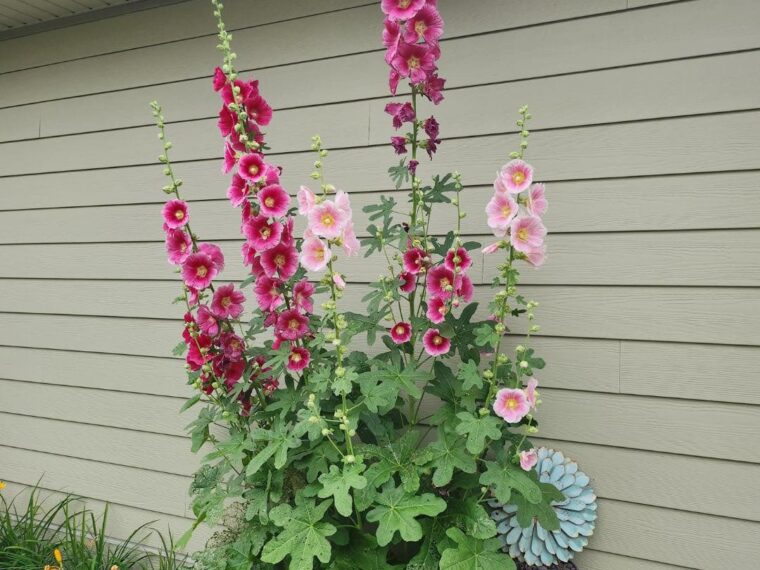In a world where garden plants tend to be either beautiful or useful—but rarely both—hollyhocks (Alcea rosea) break the mold.
These towering plants can grow up to 8 feet tall, with dazzling flowers in shades of pink, purple, white, red, and even deep black. While they’re a beloved staple of classic cottage gardens, hollyhocks offer so much more than just eye-catching blooms.
Did you know every part of the hollyhock is edible? And that it has a rich history of medicinal and culinary use stretching back centuries?
If you want a plant that’s stunning, easy to grow, great for pollinators, and fully usable—from root to flower—hollyhocks deserve a spot in your garden.
What Are Hollyhocks?
Hollyhocks are biennial or short-lived perennial plants in the mallow family (Malvaceae), related to hibiscus, okra, and marshmallow root. They’re:
- Tall (6 to 8 feet)
- Producing vertical spikes full of large, colorful flowers
- Sun lovers that thrive in well-draining soil
- Blooming mid-summer to early fall
- Magnetizing bees, butterflies, and hummingbirds
Often planted along fences or walls, hollyhocks add height, color, and old-world charm to any garden.
7 Reasons to Grow Hollyhocks in Your Yard
1. Dramatic, Stunning Flowers
Few plants command attention like hollyhocks. Their tall flower spikes create a romantic, lush backdrop or focal point that’s sure to impress.
2. Attract Pollinators
Hollyhocks are a nectar-rich magnet for bees, butterflies, hummingbirds, and other beneficial insects, helping your garden thrive.
3. Easy to Grow
Despite their grand appearance, hollyhocks are hardy and low-maintenance. Once established, they mostly need regular watering and occasional support.
4. They Self-Seed & Naturalize
Though biennials, hollyhocks often reseed themselves, giving you colorful displays year after year with minimal effort.
5. Entirely Edible and Medicinal
You can eat or use every part—flowers, leaves, seeds, and roots—all of which have culinary or healing uses.
6. Improve Soil Health
Their deep taproots break up compacted soil, improve drainage, and bring nutrients from deep layers closer to the surface.
7. Complement Other Garden Favorites
They pair beautifully with plants like coneflowers, black-eyed Susans, lavender, foxgloves, and delphiniums for a layered, colorful border.
How to Eat Hollyhocks: Yes, Every Part Is Edible!
Next page




